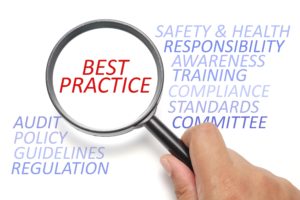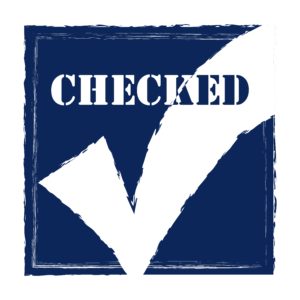This article, which first appeared in the May/June 2013 edition of Propane Canada magazine, discusses the basic standard of care your company is expected to achieve as it relates to the technical regulatory aspects of conducting business in the propane and fuel oil sectors.
Once an investigation into an incident is completed, I am often requested to provide an opinion as to whether or not an individual’s or company’s actions met the “industry’s standard of care”. In this article, I focus on the issues of meeting the basic standard of care you are expected to achieve as it relates to the technical regulatory aspects of conducting business in the propane and fuel oil sectors.
As quite a few propane distributors also have a fuel oil delivery component, I have extended this article to include the fuel oil aspects as well. Companies that deliver and provide services in both fuel sectors should adopt the same level of regulatory compliance for both fuels.
Introduction to Standard of Care
When I am asked to look at an individual or company from the standard of care perspective, the first thing I do is compare the company’s practices and employee actions to the acts, regulations, & codes and standards in place at the time of the incident. I will also reference industry specific technical manuals, technical papers, manufacturer’s manuals/bulletins, and training and certification programs.
If a person takes training and/or a certification program and fails to apply the knowledge learned in the program, it can be interpreted that the person failed to meet the industry’s basic standard of care.
An example of the type of documents reviewed in conjunction with the regulations and codes during the development of a standard of care opinion would be two Canadian fuel oil technical manuals published in recent years. The manuals describe recommended and well-established practices for the installation and maintaining oil burners, furnaces, boilers, water heaters, and heating oil tanks and piping.
The manuals establish the standard of care expected when conducting work in the areas identified. There are no such manuals within the propane industry, so an equivalent review, in this case, would focus on the appliance and equipment manufacturer’s literature.
As you can see by the materials listed, the standard of care issue can go well beyond the regulation and code requirements that everyone is familiar with. It is important that, in addition to the regulations and codes, that you are aware of and familiar with all industry training programs, technical manuals, and manufacturer’s literature which describe how certain tasks are to be performed or maintenance conducted.
Standard of Care – What Does it Mean?
Standard of care is the degree of prudence and caution required of an individual who is under a duty of care. Certified fuel technicians, trained fuel delivery persons or persons who operate fuel storage facilities are, due to the nature of the product, expected to work under a “duty of care”.
The requirements of the standard are closely dependent on the specific circumstances being discussed. Whether the standard of care has been breached is dependent upon the actions of the person or company, the company’s policies, and procedures, and is usually looked at in terms of compliance.
 Standard of care is often referred to as “industry standard of practice”, “best practices”, or “code of practice.” Whatever name is used, they essentially have the same meaning and outcome – to have a program in place that provides a vehicle for the company to meet or exceed the regulatory regime under which it must operate and to monitor the level of compliance on an ongoing base. The standard of care program provides the knowledge, policies, and procedures required by company personnel to meet everyday compliance requirements in the execution of their duties.
Standard of care is often referred to as “industry standard of practice”, “best practices”, or “code of practice.” Whatever name is used, they essentially have the same meaning and outcome – to have a program in place that provides a vehicle for the company to meet or exceed the regulatory regime under which it must operate and to monitor the level of compliance on an ongoing base. The standard of care program provides the knowledge, policies, and procedures required by company personnel to meet everyday compliance requirements in the execution of their duties.
Benefits of Implementing a Standard of Care Program
Your customers, employees, and suppliers have a right to expect a level of regulatory compliance that keeps everyone safe and free from harm or injury. A Standard of Care Program covers all aspects of the business with respect to:
- hiring and training;
- product acquisition and delivery;
- equipment and appliance acquisition;
- installation and servicing of equipment and appliances; and
- maintenance of company and customer assets.
A well written and implemented Standard of Care Program can result in less government regulation; in other words, the industry regulates itself. From the perspective of the Authority Having Jurisdiction (AHJ), there is an increased comfort factor on the operational aspects of the company.
This allows the AHJ to focus human and financial resources on chronic non-compliant companies. The implementation of a documented Standard of Care Program can provide a model to approach the AHJ to forgo the requirements for formal timed and documented inspections and replace them with an ongoing quality assurance program. This is the same concept under which the natural gas utilities operate.
While the tasks of putting together a Standard of Care Program can be daunting, the benefits greatly outweigh the resources required to develop, implement and monitor the program. It is much easier, satisfying and financially more profitable in the long run to operate the business well.
As Mike Holmes often says: “Do it right the first time”.
By doing all things right the first time, you maximize the existing human, equipment and financial resources you have available. Cutting corners and getting away with a non-compliance exposes the customer and employee to a possible unsafe condition that could be life-threatening and expose the company to litigation.
Companies can also see reduced worker compensation costs by a reduction in personal injuries through education, adherence to safe work practices and a healthier, more productive workforce.
Another very tangible benefit can be reduced insurance costs through fewer vehicle accidents and customer incidents.
The program can also provide a means of best operational practices to negotiate insurance premiums downward. I have seen in the past where any savings derived from not complying with the regulatory regime have been quickly eaten up by legal fees, insurance rate increases, and, worst of all, customer confidence.
A company’s reputation is only as good as the last delivery, installation or service call. Customers who feel unsafe or experience a loss due to a company not adhering to the regulatory requirements or company incompetence will quickly create a negative reputation for that company. We all know that a poor reputation affects the company’s very existence in the marketplace.
Basic Standard of Care Program
A Standard of Care Program can be infinite, dependent upon the corporate due diligence vision. While it is feasible and possibly beneficial to exceed the basic compliance requirements, the corporation must be conscious that the level of compliance does not negatively impact the productivity and become a hindrance to conducting everyday business.
As with most things in life, it is best if a balance can be achieved between the level of compliance and the company’s need to conduct business safely, efficiently and in a financially beneficial manner.
I see the implementation of a Standard of Care Program as a multi-staged process where the program is developed and implemented in varying degrees. The basic Standard of Care Program establishes the minimum required regulatory compliance and monitors the company’s level of compliance.
As you become more comfortable and meet the established compliance levels, specific areas of the company’s operation can be targeted to increase the compliance levels that can be shown to further benefit the customers, employees, and company.
I believe if a company can have a document that provides the vehicle for the company to meet the minimum regulatory requirements, as provided in the acts, regulations, codes and standards, along with a mechanism in place to document and improve the percentage level of compliance, that company has made a great leap forward over its competition.
You must remember that once the Standard of Care Program is put into place with compliance levels greater than the minimum regulatory requirements, the company will be held to that level of compliance. Its failure to meet the level of compliance could result in the company being fined, prosecuted or sued with little or no way of defending itself.
 It is, therefore, critical to the entire process that a monitoring program is put in place to continually provide feedback, identify problem areas and determine the compliance level the company is meeting. It is a complete waste of time developing and implementing a Standard of Care Program without a monitoring component being put into place.
It is, therefore, critical to the entire process that a monitoring program is put in place to continually provide feedback, identify problem areas and determine the compliance level the company is meeting. It is a complete waste of time developing and implementing a Standard of Care Program without a monitoring component being put into place.
Development of a Standard of Care Program
For the plan to be successful, companies must make regulatory management a key objective in the company’s overall operational strategy. Responsibility for the plan’s implementation and ongoing operation needs to be placed at a senior management level, with access to the CEO.
As mentioned previously, the task can be very daunting when you start to consider all the components that go into developing a Standard of Care Program. My solution is the old saying: “How do you eat an elephant? One bite at a time”.
In my view, a reasonable approach is to identify all the technical and regulatory requirements your company must meet. Then review each document to see how it impacts your company’s operation. Develop a running list of all the company’s offerings and activities.
Eventually, you need to create a roadmap which consolidates the technical and regulatory requirements with the company’s operational objectives, employee needs, and customer expectations. The map provides the big picture overview you require to fully understand the components that will go into developing the plan and the direction to follow.


